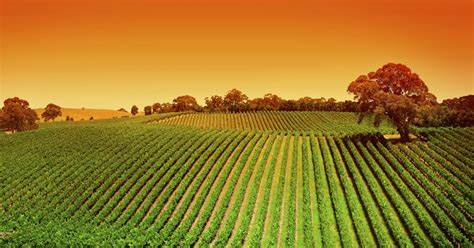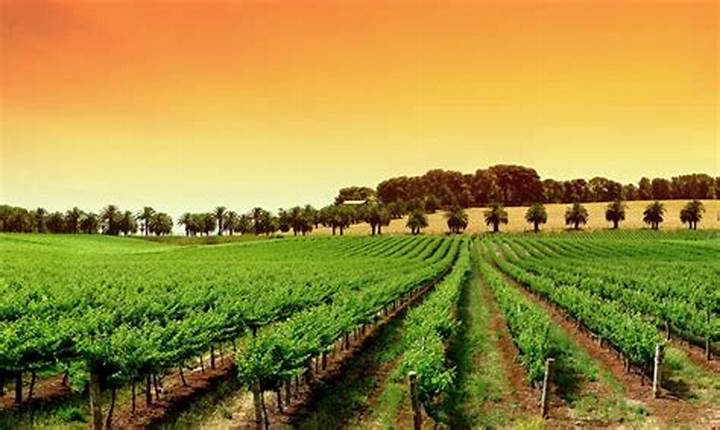Welcome to our comprehensive guide on unlocking the secrets of Mediterranean agriculture. In this article, we will delve deep into the techniques, practices, and unique characteristics that make Mediterranean agriculture definition so successful. From olive groves and vineyards to citrus orchards and tomato fields, the Mediterranean region has been a hub of agricultural excellence for centuries.
With its mild climate, fertile soils, and rich cultural heritage, Mediterranean agriculture definition has become synonymous with sustainable farming practices and high-quality produce. Through careful observation and centuries of tradition, Mediterranean farmers have cultivated a harmonious relationship with their environment, resulting in bountiful harvests year after year.
Whether you are an aspiring farmer, a curious enthusiast, or simply someone who appreciates the flavors of the Mediterranean diet, this guide will provide you with a solid understanding of the principles and practices that underpin Mediterranean agriculture. Join us as we unlock the secrets that have made this region a cradle of agricultural ingenuity and productivity.
Get ready to discover the transformative power of Mediterranean farming and unlock the potential it holds for a sustainable future.
Contents
- 1 Characteristics of Mediterranean Agriculture
- 2 Advantages and Challenges of Mediterranean Agriculture
- 3 Crops and Livestock in Mediterranean Agriculture
- 4 Sustainable Practices in Mediterranean Agriculture
- 5 Traditional Farming Techniques in the Mediterranean Region
- 6 Modern Technologies and Innovations in Mediterranean Agriculture
Characteristics of Mediterranean Agriculture
Mediterranean agriculture is characterized by a set of unique features that contribute to its success. One of the key characteristics is the mild Mediterranean climate, which is characterized by hot, dry summers and mild, wet winters. This climate provides ideal conditions for many crops, allowing them to thrive and produce high-quality yields.
The fertile soils of the Mediterranean region are another essential characteristic of Mediterranean agriculture. These soils are rich in organic matter and nutrients, providing a solid foundation for plant growth. The Mediterranean region is also home to a diverse range of microclimates, thanks to its varied topography. This diversity allows farmers to grow a wide variety of crops, adapting to the specific conditions of each microclimate.
In addition to favorable climate and fertile soils, what is Mediterranean agriculture benefits from the region’s rich cultural heritage. The knowledge and traditions passed down through generations have shaped the farming practices in this region, resulting in highly efficient and sustainable agricultural systems. The Mediterranean diet, known for its health benefits, is also closely tied to the agricultural practices of the region.
Advantages and Challenges of Mediterranean Agriculture
Mediterranean agriculture offers several advantages that contribute to its success. The mild climate allows for a longer growing season, which means that farmers can cultivate multiple crops throughout the year. This not only increases productivity but also provides a diverse and varied harvest. The Mediterranean region is also well-suited for the cultivation of certain high-value crops, such as olives, grapes, and citrus fruits, which have become iconic symbols of Mediterranean agriculture.
However, Mediterranean agriculture also faces unique challenges. The hot and dry summers can pose a risk of drought, which can negatively impact crop yields. Water scarcity is a constant concern for farmers in the region, and efficient irrigation techniques and water management strategies are crucial for sustainable agriculture. Additionally, the Mediterranean region is prone to wildfires, which can devastate agricultural lands and pose a threat to farmers.
Another challenge faced by Mediterranean agriculture is the increasing pressure on land use. Rapid urbanization and tourism development have led to the conversion of agricultural land into urban areas, reducing the available farmland. This puts additional pressure on farmers to maximize productivity on limited land, while also preserving the natural resources and biodiversity of the region.
Crops and Livestock in Mediterranean Agriculture
Mediterranean agriculture definition is known for its diverse range of crops and livestock. The region is famous for its production of olives and olive oil, which are essential components of the Mediterranean diet. Olive groves can be found throughout the Mediterranean region, and the trees are well-adapted to the local climate and soils. The cultivation of olives not only provides a valuable source of income for farmers but also helps to prevent soil erosion and maintain the ecological balance of the region.
Vineyards are another iconic feature of Mediterranean agriculture. Grapes are grown for wine production, as well as the production of raisins and table grapes. The Mediterranean climate provides optimal conditions for grape cultivation, allowing for the development of unique flavors and aromas in the wines produced in the region.
Citrus orchards are also prevalent in Mediterranean agriculture. Oranges, lemons, and other citrus fruits thrive in the warm Mediterranean climate, and their juicy and aromatic qualities have made them popular exports from the region. The cultivation of citrus fruits not only contributes to the economic prosperity of Mediterranean farmers but also provides a refreshing and nutritious addition to the Mediterranean diet.
In addition to these crops, the Mediterranean region is also home to a variety of other fruits and vegetables, such as tomatoes, peppers, eggplants, and figs. These crops benefit from the favorable climate and fertile soils, resulting in high-quality and flavorful produce.
Livestock farming is another important component of Mediterranean agriculture definition. Sheep and goats are well-suited to the rugged terrain of the region and provide a source of meat, milk, and cheese. Mediterranean farmers have also developed traditional methods of animal husbandry, such as transhumance, where herds are moved seasonally between lowland and upland pastures, allowing the animals to graze on diverse vegetation and minimizing the impact on the land.
Sustainable Practices in Mediterranean Agriculture
Sustainability is at the core of Mediterranean agriculture definition. Farmers in the region have long recognized the importance of preserving the natural resources and biodiversity of their land. Traditional practices, such as terracing and crop rotation, have been used for centuries to prevent soil erosion and maintain soil fertility.
Terracing, in particular, is a widely used technique in hilly and mountainous areas. It involves building steps or terraces on slopes, which helps to retain water and prevent soil erosion. Terracing not only maximizes the usable land area but also allows for efficient water management, as excess water can be collected and used for irrigation.
Crop rotation is another sustainable practice that is widely practiced in Mediterranean agriculture. By rotating crops, farmers can break the cycle of pests and diseases, improve soil fertility, and reduce the need for chemical fertilizers and pesticides. Legume crops, such as beans and lentils, are often included in crop rotations, as they fix nitrogen in the soil, reducing the need for synthetic fertilizers.
In recent years, Mediterranean farmers have also embraced innovative sustainable practices, such as precision agriculture and organic farming. Precision agriculture utilizes modern technologies, such as GPS and remote sensing, to optimize inputs, reduce waste, and improve crop yields. Organic farming, on the other hand, emphasizes the use of natural fertilizers and pest control methods, avoiding synthetic chemicals and promoting biodiversity.
Traditional Farming Techniques in the Mediterranean Region
The agricultural practices of the Mediterranean region are deeply rooted in tradition and cultural heritage. Traditional farming techniques have been passed down through generations, shaping the landscape and providing a sustainable way of life for farmers.
One such technique is the construction of stone walls, which are used to create terraces and retain soil on slopes. The stones used in these walls are carefully selected and placed, allowing for natural drainage and preventing erosion. Stone walls not only serve a practical purpose but also contribute to the visual beauty and cultural identity of the Mediterranean landscape.
Another traditional technique is dry farming, which involves growing crops without irrigation. Dry farming relies on the natural rainfall and soil moisture, and crops are carefully selected and cultivated to withstand periods of drought. This technique requires careful planning and management, but it allows farmers to make the most of limited water resources and maintain the sustainability of their land.
Transhumance, as mentioned earlier, is another traditional farming practice in the Mediterranean region. This seasonal movement of livestock between different grazing areas helps to optimize the use of available resources and minimize the impact on the environment. It also contributes to the preservation of traditional cultural practices and the maintenance of biodiversity.
Modern Technologies and Innovations in Mediterranean Agriculture
While traditional farming techniques continue to play a significant role in Mediterranean agriculture definition, modern technologies and innovations have also made their mark in the region. These advancements aim to enhance productivity, improve efficiency, and mitigate the challenges faced by farmers.
One such innovation is the use of precision irrigation systems. These systems utilize sensors and computer algorithms to deliver the right amount of water to crops, based on their specific needs. Precision irrigation not only conserves water but also reduces the risk of overwatering and leaching of nutrients, resulting in higher crop yields and improved water-use efficiency.
Remote sensing and satellite imagery have also become valuable tools in Mediterranean agriculture definition. These technologies allow farmers to monitor crop health, detect pest and disease outbreaks, and assess the impact of climate change on their land. By analyzing the data collected from these sources, farmers can make informed decisions regarding crop management and resource allocation.
In recent years, vertical farming has gained traction in the Mediterranean region. This innovative farming method involves growing crops in vertically stacked layers, using artificial lighting and controlled environmental conditions. Vertical farming maximizes land use, reduces water consumption, and eliminates the need for pesticides, making it a sustainable solution for urban areas with limited space.
Mediterranean agriculture definition is a testament to the ingenuity, resilience, and sustainable practices of farmers in the region. With its favorable climate, fertile soils, and rich cultural heritage, Mediterranean agriculture continues to thrive and provide high-quality produce for the world. By unlocking the secrets of Mediterranean agriculture and embracing its principles and practices, we can pave the way for a sustainable future, where agriculture and the environment coexist harmoniously. So go ahead, explore the flavors of the Mediterranean diet, support local farmers, and become a part of the Mediterranean agricultural legacy.



